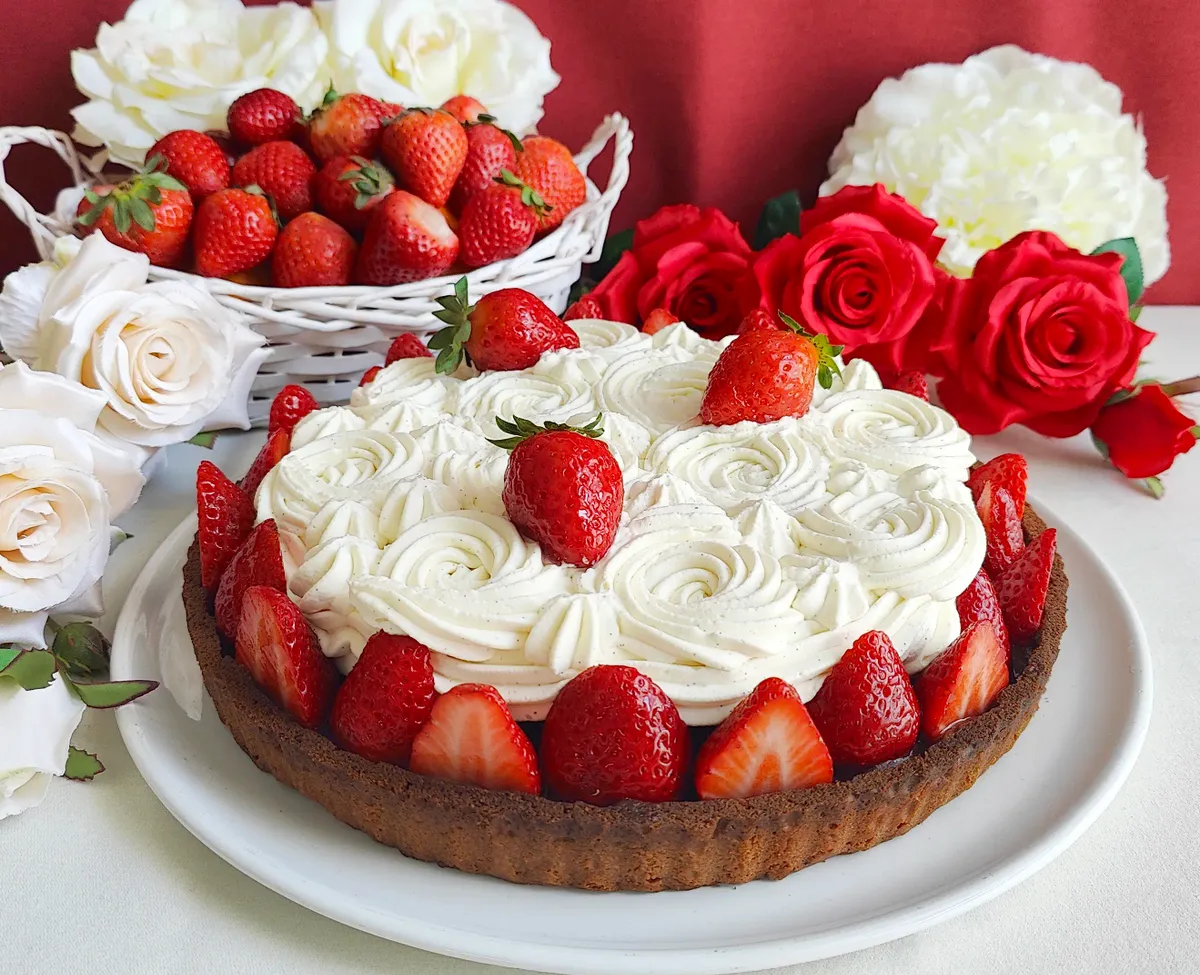
The history of strawberry almond tart
The strawberry tart with almond cream and Chantilly is a creation that stems from the evolution of classic French pâtisserie, although the exact recipe that combines all these elements does not have a specific inventor. This tart is built upon various traditional preparations that originated in France between the 17th and 19th centuries, each with a well-defined history. Its base, filling, and decoration follow techniques that have shaped French pastry-making up to the present day.
The first essential component is sablé pastry, a sweet and crumbly dough developed in France from the 17th century onwards, originally within aristocratic kitchens. Its name derives from the French word 'sablé', meaning 'sandy', due to its distinctive texture. The recipe was refined and popularised in the regions of Normandy and Paris, becoming the perfect base for fruit tarts and other desserts. This type of pastry appears in recipe collections such as those by Marie-Antoine Carême, one of the great French pastry chefs of the 19th century.
The next element is almond cream (crème d’amande), which also dates back to the 18th century. This cream is often confused with frangipane — a mixture of almond cream and pastry cream — and has its origins in the refined pâtisserie of the French court. It became particularly well-known through its use in the Galette des Rois, a traditional Epiphany cake in France, whose recipe was widely documented in the 19th century by chefs such as Jules Gouffé, a disciple of Carême.
The fruity component of the tart, in this case strawberries, began to gain popularity in French pâtisserie at the end of the 18th century. Prior to that time, the strawberries consumed in Europe were wild varieties, such as Fragaria vesca. It was not until 1714 that the French engineer Amédée-François Frézier introduced larger strawberries from Chile and Virginia into Europe, which made it possible to create new pastry recipes in the following decades. The classic French 'Tarte aux Fraises', combining sablé pastry, pastry cream, and fresh strawberries, became popular towards the end of the 19th century.
Another indispensable component is Chantilly cream, which owes its name to the Château de Chantilly near Paris. The cream was popularised by François Vatel, maître d’hôtel of the château, during the 17th century, although there is no documented evidence that he invented the recipe. It is more likely that the technique existed earlier, but the term 'Chantilly' became famous thanks to its association with the noble cuisine of the château.
The modern combination of sablé pastry, almond cream, a fresh strawberry filling (in the form of a compote or insert) and Chantilly is a contemporary evolution that emerged in French pâtisserie during the 20th century, especially with the rise of display-case pâtisserie and chefs seeking to play with textures. Although it cannot be credited to a single creator, it is a recipe that represents the fusion of tradition and innovation within French pastry-making.

 albertoimizcoz
albertoimizcoz

